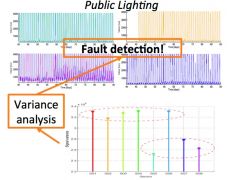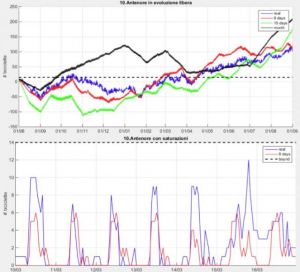

PADOVA SMART CITY:
Monitoring
System Development and Complex Data Analysis for Advanced Integrated Applications
Project summary
Project Responsibles:
Luciano Gamberini, DPG & HIT, University of Padova
Alberto Corò, Comune di Padova
Scientific Coordinator:
A. Cenedese, DEI & HIT, University of Padova
Research Fellow:
Marco Michielan, HIT, University of Padova
Partnership:
Comune di Padova
Description:
“Smart Cities pursue sustainability, livability, and social equity through technological and design innovation” (MIT research group): with this aim in mind we believe that urban analytics is a key step to understand our space and to realize smart services.
Specifically designed cyber-physical systems are used in conjunction with standard monitoring stations to sense and provide multilevel, heterogeneous and pervasive information. This information is put in relation through the time and geo-localization of the data and the physical communication and transportation networks of the city, acting like a biological nervous system.
Data-driven analysis highlights the behaviors that emerge from the interplay of human related activities and the natural phenomena.

Financing:
The Padova Smart City project has received funding from Comune di Padova.
Start Date:
February 2014
Duration:
15 months
How to turn dumb data into smart services?
-
in the analysis phase to allow the interpretation of the data, the definition of metrics and the generation of information
-
in the synthesis phase, to ease the decision process that define city policies
Three areas of investigation are considered:
- Environmental monitoring (from pollution to public lighting)
- Public service control (e.g. bike sharing)
- Human related behavior analysis (e.g. traffic monitoring)

Public lighting: fault detection through variance analysis.
|

Bike sharing: transitional graphical model.
|
The Bike Sharing model
-
to optimize the initial service condition in order to reduce user discomfort (i.e. maximize QoS)
- to design efficient control procedures to act continuously and regulate the free dynamics, based on the maximization of the QoS or on the minimization of the control cost

Contact Us:
If you are interested in the project and you want to be updated on our activities or if you would like to contribute to the workshops to be organized, you can contact us using the form below.
